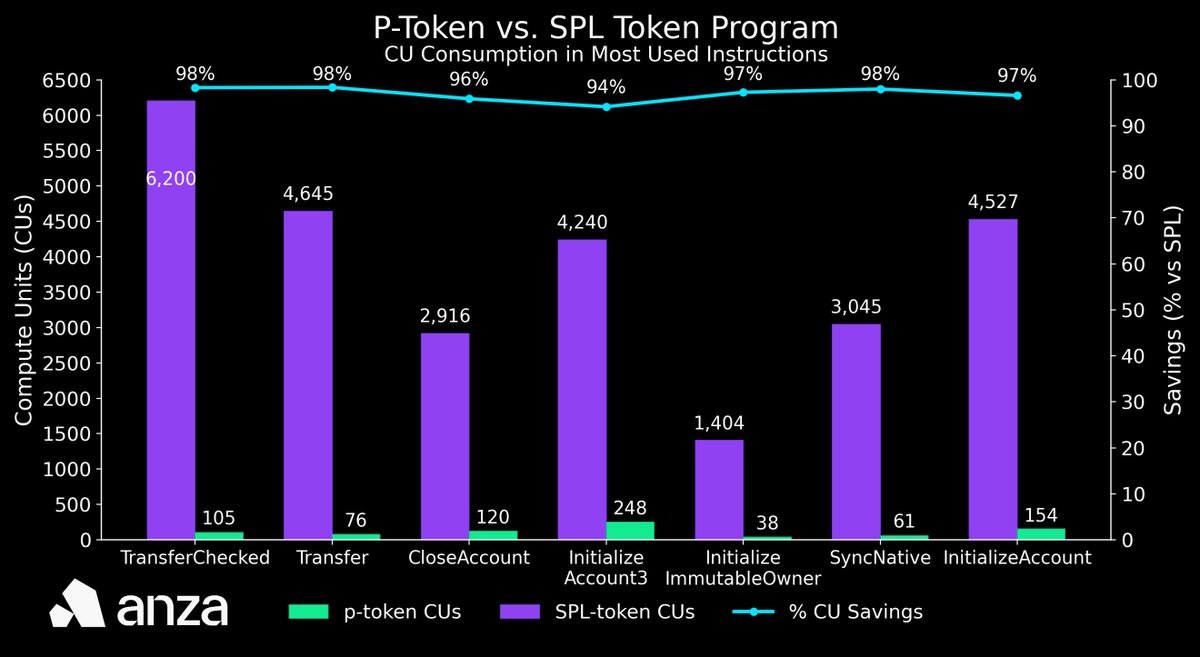1/ SIMD-0266: Efficient Token Program, authored by @0x_febo, propose replacing the current SPL token program with a new compute optimized version called p-token. The upgrade will reduce Token program CU usage by up to 98%. Here’s how it works 🧵 

2/ Today, ~10% of block compute units are spent on Token program instructions. By cutting these costs to a fraction of current usage, p-token will free nearly 12% of block space for other transactions, directly increasing Solana’s effective throughput.
3/ p-token is a complete reimplementation of SPL Token: no heap allocations, zero-copy data access, and full backward compatibility. Clients don’t need to change any code and it is a direct drop in replacement designed for maximum efficiency.
4/ New instructions like Batch and UnwrapLamports further reduce compute for common DeFi patterns, allowing multiple token ops per CPI and removing the need for temporary native accounts. Programs can now execute complex flows far more efficiently.
5/ These optimizations make p-token a direct capacity unlock for the network, complementing efforts like 100M CU blocks and higher per-account limits. Neodyme's audit replayed mainnet transactions and confirmed identical outputs with the current SPL token program.
6/ Read the full SIMD-0266 proposal and join the discussion on GitHub: github.com/solana-foundat…
• • •
Missing some Tweet in this thread? You can try to
force a refresh





